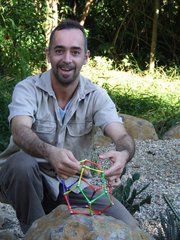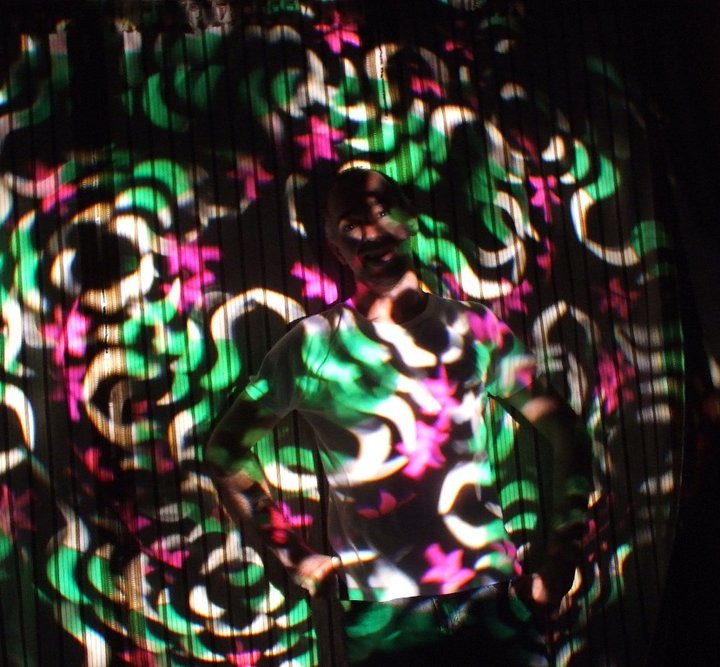
NAME
Dr. Des Tramacchi
BIO
Des Tramacchi has a PhD in religious studies, specialising
in entheogens. His research interests include the religious
uses of psychoactive substances, sociology of religions, ecstatic
dance cultures, and the anthropology of consciousness.
LECTURE TITLE
‘Exciting the Spirit: Cross-cultural perspectives on
the uses of stimulants as entheogens’
SYNOPSIS
The word “stimulant” is derived from the Latin
stimulare: “to goad on”. Stimulation is therefore
the opposite of yoga (from the Sanskrit root yuj meaning “to
yoke” or “to control”) but not necessarily
its mortal enemy. Psychiatrist Roland Fischer’s well-known
“cartography of ecstatic and meditative states”
provides a point of departure for understanding this apparent
paradox. Fischer observed that altered states of consciousness
arising from hyper-activation of the nervous system (such as
prolonged dancing or psychostimulant drugs) share many similarities
with altered states of consciousness produced by conserving
energy within the nervous system (such as those produced by
sensory deprivation, zazen and hatha yoga). Fischer’s
most surprising clinical finding was that either extreme in
altered consciousness causes a physiological rebound. Both hyperactivation
and hypoactivation can similarly propel consciousness beyond
its usual capacity to process the “perception-hallucination
continuum” and into a state of ecstasy similar to the
sam?dhi of Hinduism, Buddhism, Sikhism and the Yoga Schools.
Globally, the origins of stimulant use are frequently encoded
in myth. For example, the first tea plant in China was said
to have grown from the eyelids of Bodhidharma (founder of the
Chan school of Buddhism) after he cut them off in order to more
easily stay awake during meditation. The power of stimulants
to enhance wakefulness, loquacity and endurance is used in many
religious contexts. Coffee, the first records of which date
to the tenth century, was initially used primarily by Sufis
as an aid to meditation, prayer and dance. Tabernanthe iboga
(a stimulant at low to medium doses) is used as a tool to communicate
with ancestors and to increase ritual output in the ceremonies
of the Bwiti and Mbiri religions of Gabon. Khat (Catha edulis),
the” flower of Paradise”, is chewed in Yemen, Somalia,
Ethiopia and Kenya for its stimulating properties, most frequently
in rituals incorporating prayer and music and designed to augment
religious communion. Ephedra species are used to make the sacred
stimulant beverage Hom, an important sacrament of Zoroastrianism.
Many Indologists believe that the divine Soma potion of the
Vedas (the historical prototype of the Iranian Hom drink) was
similarly compounded from Ephedra. The Vedic god Indra was an
avid drinker of Soma which restored his energy and conferred
great strength in battle.
Stimulants are often a preferred food of the spirits, as well
as a medium by which spirits communicate with humans. In the
Yoruba culture and religion of West Africa, kola nuts are important
religious offerings during prayer, ancestor veneration, naming
ceremonies, weddings and funerals. Kola nuts with four lobes
are also used in a system of divination called Obi. In the Andes,
half a world away, coca leaves are offered to the spirits, especially
Pacha Mama and the spirits of sacred places. Like kola, coca
symbolises sociality and exchange between spirits and humans.
Like kola, coca is a medium of communication with spirits and
is used in traditional divination systems.
Despite a venerable history of religious use, the term “stimulant”
conjures in the western mind tableaux of compulsive use of methamphetamine,
criminal and paramilitary empires built around the trade in
cocaine, or on deeper reflection, the ubiquitous cups of tea
and coffee that drive the cogs of post-industrial free-market
economies. In this presentation I hope to demonstrate that between
the extreme and the banal forms of stimulant use, we can find
a variety of legitimate, time-honoured and life-enhancing religious
applications for these invigorating and mercurial substances.
